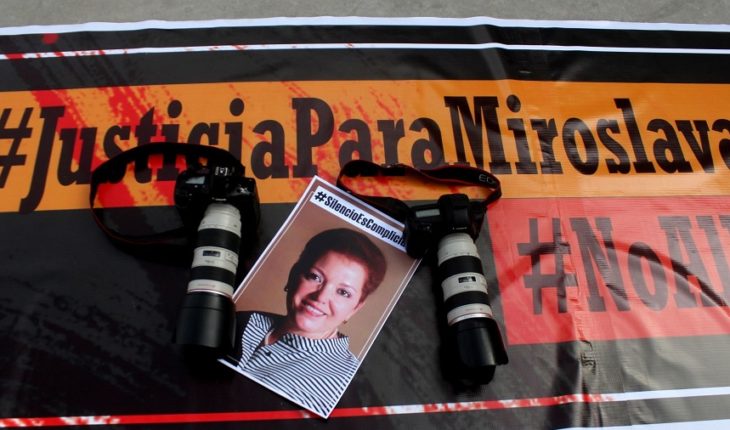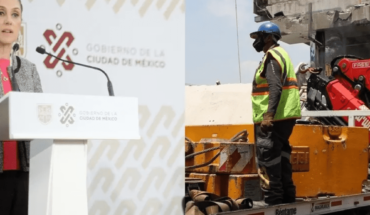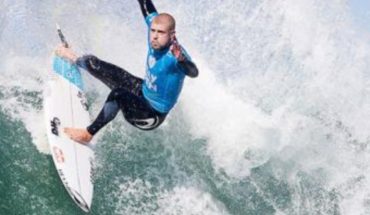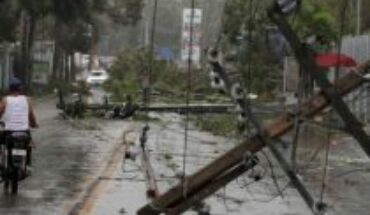After two delays and almost three years after the crime occurred, on Monday the oral trial against Juan Carlos “N” alias Larry, one of the alleged perpetrators of the murder of journalist Miroslava Breach, will begin in a federal court in Chihuahua.
The Attorney General’s Office (FGR) will try to convince the judge that the detainee was one of the persons who was directly involved in the journalist’s crime when he left his home on the morning of March 23, 2017, and that he did so in retaliation for his journalistic work, which evidenced networks of political protection to organized crime in the entity.
Find out: In court, they reveal the threats of politicians against journalist Miroslava Breach in Chihuahua
The trial is expected to be extended for several days, but today’s hearing is key because prosecutors will present the theory of their entire case. In addition, court sources confirmed to Animal Político that key witnesses are scheduled to be called to the bench today.
This process is considered a priority for the Public Prosecutor’s Office. Even a special team of agents traveled from Mexico City to Chihuahua to support the presentation of the case to the Special Prosecutor’s Office for the Care of Crimes against Freedom of Expression (FEADLE). Among them is prosecutor Manuel Granados, who in the past days had judges keep both Javier Duarte and Rosario Robles in prison.
What is the case that prosecutors want to present and with what evidence? How will the trial take place and what will happen in it, what remains? This points are detailed below from the information provided by the authorities:
A crime against free speech
The case that the prosecutors will expose has a clear motive: Miroslava Breach was killed in retaliation for demonstrating the protection of local authorities to organized crime in the locality, and specifically to a criminal group called Los Salazar or Loses Salazar, allied in Sonora and Chihuahua of the Pacific Cartel.
Prior to his murder, Breach – correspondent of the newspaper La Jornada, among other media – amassed a series of journalistic works in which he had alerted him to collusion and even possible appointment of mayors and police chiefs linked to the aforementioned criminal group.
A specific report would have detommed the actions against him: the titled “Impose organized crime on candidates for ediles in Chihuahua”, in which the journalist revealed the case of PRI and PAN candidates allegedly supported by the criminal group, highlighting the case of the municipality of Chínipas, where the aspirant was a nephew of the leader of Los Salazar.
The final decision to assassinate Breach would have been made, according to the inquest, after the then mayor of Chínipas, the panista Hugo Schultz Alcazar, and a local party leader allegedly handed the criminals a recorded phone call with the journalist acknowledging the publication of the memo, with his own sources.
The organization of the crime was carried out by Larry, who for several days studied the movements and routines of the journalist, with the support of another person identified as Jaciel Vega Villa, who today remains at the fugitive.
Finally, on the morning of March 23, shortly before 7 a.m., the crime was realized. The man in charge of executing him was a person named Ramón Andrés, who waited for the journalist to board his Renault van to shoot him on a dozen occasions, and then flee along with Larry and Vega Villa. Months later the alleged hitman was found dead in Sonora.
In short, prosecutors conclude that the murder of Miroslava Breach was a crime against freedom of expression, where intellectual authorship was carried out by the leaders of Los Salazar, the intellectual co-authorship and material of the crime fell to Larry and the other two people mentioned, and where there would also be a co-responsibility of the panist politicians who recorded and delivered the phone call with the journalist.
The evidence: witnesses and recordings
Prosecutors and legal advisers (representatives) of the victim will present at the trial more than 50 means of proof, with which they will attempt to confirm the aforementioned history, far from reasonable doubt.
Among these elements are several witnesses who will be summoned to appear. Political Animal has been able to confirm that among them are the State prosecutor himself, Cesar Augusto Peniche Espejel, who led a good part of the investigation of the Miroslava case before it was attracted by the FGR.
The accuser has also cited as a witness former panist mayor Hugo Schultz Alcázar, who delivered the call with Miroslava to the criminals. The policy has so far failed to be indicted in the case thanks to its collaboration with information, although its legal status continues under the authorities’ analysis.
A journalist, Miroslava’s partner, has also been asked to testify at the trial. It will be joined by multiple other people with whom it is intended to confirm the mechanics of the facts already described above.
The FGR will also present as evidence the complete video recording of the calls that politicians made with Miroslava and that were found inside a computer located in a search to a house in the colony Villas del Rey, which was inhabited by one of the material authors of the crime. This is among various backgrounds, photographs and other elements.
In addition, what the defence lawyers present to try to discredit the theory of the Public Prosecutor’s Office, and of legal advisers, will add to this.
How will the trial unfold?
As the National Code of Criminal Procedures marks, the judicial process will be carried out before a new judge who does not know the background of the case, and who will issue a conviction or acquitrate based on the arguments and evidence presented to him by each of the parties to the trial. The process was based on the cause number 259/2018.
The oral trial hearing will begin with the presentation of the so-called “opening allegations”, which consists of the prosecutors’ explanation of their theory of crime and how it is intended to prove the defendant’s guilt in these facts. Larry’s defense has the option to respond or not from the start to them.
Afterwards, the probative relief will develop, which consists of the presentation of all the evidence offered. The order for this is as follows: first it will be upon prosecutors to present their evidence; then it will be the turn of the victim’s legal advisers (who are a non-governmental organization) who are also involved in the case; and eventually the defense’s evidence will be vented.
It is in this part that the procedure is expected to be lengthened, due to the amount of evidence available. This will depend, for example, on the time each witness is being cross-examined. Case sources estimate that depending on the court’s workload, the procedure could take two weeks to one month.
All the evidence that will follow is the “closing allegations”, which are basically the conclusions of each of the parties.
After all of the above, the judge will issue a verdict of innocence or guilt.
If Larry is found guilty, the judge will set a new hearing date to announce the terms of such conviction, i.e. prison years, compensation for damage, among others.
It should be noted that the FGR will request, as stipulated by the Penal Code of the State of Chihuahua, the highest prison sentence against the defendant, considering that it was a qualified homicide with multiple aggravators. Such a sentence could reach up to 70 years in prison.
What’s left
Regardless of the outcome of the process, Miroslava Breach’s crime is a case that won’t be closed. The obvious reason for this is that the arrest warrant against Jaciel Vega Villa, another of the material co-authors of the crime, is still lacking to be completed.
But in addition, the March 23 Collective, which has closely followed up the journalist’s crime, has pointed out various edges that the official investigation has not adequately addressed, such as the responsibility of the politicians who videotaped Miroslava, and in general, all those she denounced in the journalistic work that ended up costing her her life.
What we do in Animal Político requires professional journalists, teamwork, dialogue with readers and something very important: independence. You can help us keep going. Be part of the team.
Subscribe to Animal Politician, receive benefits and support free journalism.#YoSoyAnimal
translated from Spanish: FGR’s strategy against alleged Miroslava killer
February 17, 2020 |





